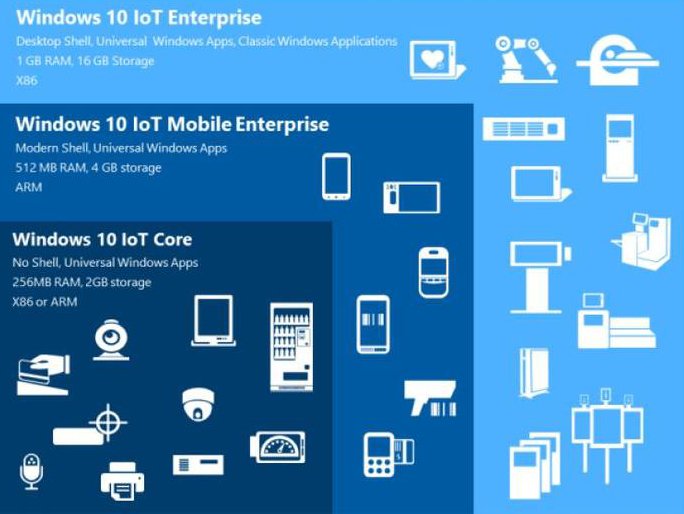
Connect network cable to the Ethernet port. Now insert the SD card loaded with Windows 10 IoT image as shown below. Now it’s time to insert the SD card in Raspberry Pi 2: Click on the Safely Remove Hardware icon in your task tray and select your USB SD card reader to safely remove it from the system. Select the SD card you want to flash and then provide the location of the ffu and flash the image. The tool will enumerate devices as shown. 
Search for “WindowsIoT” from start menu and select the shortcut “WindowsIoTImageHelper” (search the program in Start Menu) Use IoTCoreImageHelper.exe to flash the SD card.Insert a micro SD card into your SD card reader.m.When installation is complete, flash.ffu will be located at C:\Program Files (x86)\Microsoft IoT\FFU\RaspberryPi2 It will automatically mount itself as a virtual drive so you can access the contents. Double click on the ISO (IoT Core RPi.iso).
 Download the ISO for the Raspberry Pi 2 from the Microsoft Download Center. This should be done on a PC with Windows installed on it physically. no desktop environment, few unnecessary services), you'll get a lot less bloat.Follow the instructions below to put the Windows 10 image on your card. If you use Arch and only install exactly what you need (i.e. If you use something like Ubuntu, there'll be a reasonable overhead as you'll still have a GUI, but perhaps less than Windows. Depending on how confident you are, you could install something well-known such as Ubuntu or something more basic, such as Arch Linux, which will involve you installing and configuring many aspects of your OS, including desktop environment etc. If, however, it turns out that you can't use Windows 10 IoT on your device, you might find it more convenient just to install a lightweight Linux distribution. It may be worth checking what hardware your device contains, as if it is listed, you might be able to use Windows 10 IoT.
Download the ISO for the Raspberry Pi 2 from the Microsoft Download Center. This should be done on a PC with Windows installed on it physically. no desktop environment, few unnecessary services), you'll get a lot less bloat.Follow the instructions below to put the Windows 10 image on your card. If you use Arch and only install exactly what you need (i.e. If you use something like Ubuntu, there'll be a reasonable overhead as you'll still have a GUI, but perhaps less than Windows. Depending on how confident you are, you could install something well-known such as Ubuntu or something more basic, such as Arch Linux, which will involve you installing and configuring many aspects of your OS, including desktop environment etc. If, however, it turns out that you can't use Windows 10 IoT on your device, you might find it more convenient just to install a lightweight Linux distribution. It may be worth checking what hardware your device contains, as if it is listed, you might be able to use Windows 10 IoT. 
Notably, though, some lower-end CPUs by Intel are supported - mostly products of the Atom, Celeron and Pentium range. The majority of these are single-board computers and the like, rather than regular PCs.

The list of supported hardware for Windows 10 IoT shows which devices are currently supported.








 0 kommentar(er)
0 kommentar(er)
